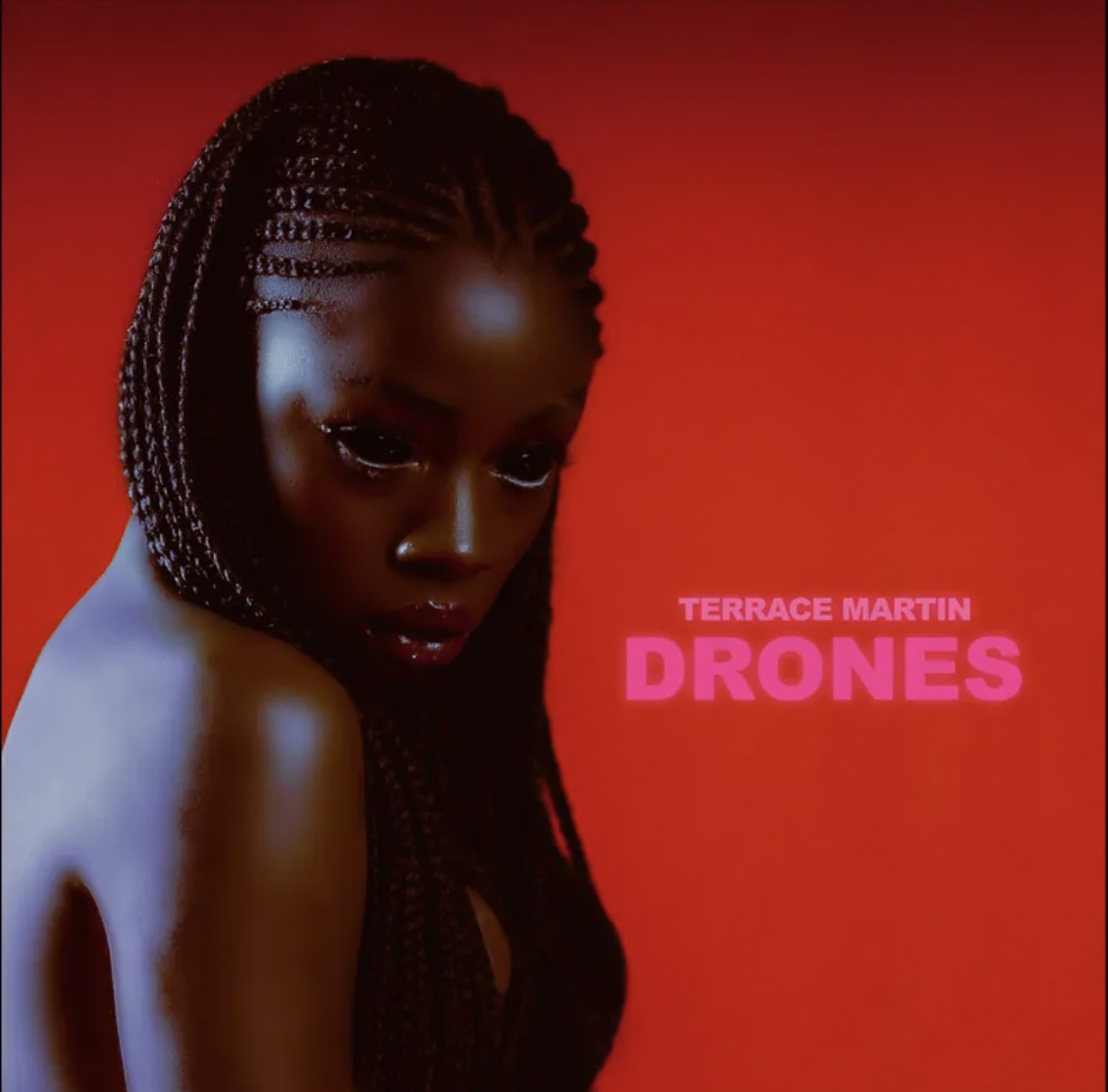DRONES: ALBUM REVIEW
Terrace Martin is one of the greatest producers alive today — not just by being one of the go to producers for multiple west coast acts such as YG, Snoop Dog, Warren G and Murs, but by blending the realms of Hip Hop and Jazz, producing music that collectively binds the spirits of both genres in the best of ways.
Martin is most commonly regarded as one of Top Dawg Entertainment's (T.D.E) best producers, producing for the likes of Ab-Soul, Jay Rock and Kendrick Lamar; contributing to almost every song off the greatest rap album in the last decade: To Pimp a Butterfly.
One of the most exciting aspects of Martin's character which inspires his style of production is his passion for the game and highly skilled talent of keeping it real with his friends who also tend to be his best collaborators. He blesses the MPC and tenor saxophone on any song —whether it be on a west coast hip hop song in 2008 or with a jazz ensemble in 2017.
His love for jazz and his love for his city of Crenshaw and its culture blends synergistically into a sound that’s identifiable on any track he’s featured on.
Despite releasing countless projects such as the Sounds of Crenshaw series and creating multiple supergroups such as R+R = NOW and The Pollyseeds, DRONES is a thematic sequel to 2016’s Velvet Portraits. DRONES blends the rich soul of the past while being carried by today’s rising poets and pipers, sonically culminating in something beautiful to be played tomorrow all while showcasing the soul of L.A.
The first half of this album can be described as comfortable. The opening track is Martin's usual take on an album opener, short and sweet production.
The production on “DRONES” showcases Martin's strong G-Funk influence — playful and full of bounce. The production on this, along with “Leave Us Be” and “Tapped” are comfortable and enjoyable, but don’t experiment with his formula of production. “Work It Out” and “Reflections” also showcase Martin's dependable production style, but the execution leaves much to be desired.
It sounds comfortable, yet scared to expand creativity beyond the same boxes Martin has created over the last decade and a half. He also sings a good amount on this album, which doesn’t bring down the value, but doesn’t necessarily bring it up either.
The second half of the album is where it really catches its stride.
The album shakes off the calm groove that it seems like it was built around. No, after Leimert Park the album picks up a much more gritty tone showcasing darker subject material, yet stays optimistic at the same time. This is where every song truly feels placed in the correct spot for a purpose, creating a dramatic sense of prose to an album where the first half is heavily laxed and contained.
Leimert Park is an interlude where Martin speaks to a bar of assumed locals, talking about how he will always pull up. “Crenshaw, Inglewood, Compton, on God Bro. Ima always pull up”. This solidifies Martin's dedication not just to himself but to the community that always kept him straight.
This song is followed up by “Griots of the Crenshaw District”, one of the hardest song titles in Martins discography. “Griots of the Crenshaw District” sounds like an epic being told by a community elder despite having no words — only an avante garde boom bap epic that can be told through chord progressions and an aggressive and daunting sax.
“Evil Eyes & Sick of Cryin’” include themes of living through harsh conditions, creating an environment that only perpetuates violence and more suffering while simultaneously altering the folks that are to have your back. But after the two, comes “Don’t Let Go”, a hymnal of sorts to offer hope and a sense of resilience to the madness — a chant that reminds Martin as well as the listener to keep the faith for something better.
“Listen” lightens the mood yet again, but serves a great lesson in listening to a higher power for strength and giving thanks where praise is due. It’s a calming and powerful closer drenched in understanding and closure.
One of the greatest breaths of air that this album provides is through its features. Martin has a large and diverse pool of artists he can pull from at a moments notice to collaborate, but the collaborators on DRONES bring friends old and new, showcasing a strong support of younger up and coming artists while demonstrating his influence of Black soul and jazz music.
Jazz comrades such as Kamasi Washington and Robert Glasper make their individual appearances despite being members of two of Martin’s supergroups. It’s the younger artists featured here that shine the brightest.
Despite the song not hitting my expectations, Channel Tres is one of the most exciting collaborators on here as he is similar to Martin, being from Los Angeles and being one of the promising producers of a new era. Aside from that, Smino as well as D Smoke carry their songs providing the best rapper features on the album.
Although DRONES doesn’t offer any songs that shatter expectations and go beyond Martins creative limitations such as previous tracks like “Curly Martin” or “Patiently Waiting”, the album shows Martin’s growth in creating an album that can present conceptually consistent themes and progressions while showcasing a level of comfort of Martin’s established prowess.
There is no question that Martin can create a conceptual jazz album or play a mean saxophone, the only question that can be asked from here going forward is how else can Martin challenge himself in the future.


